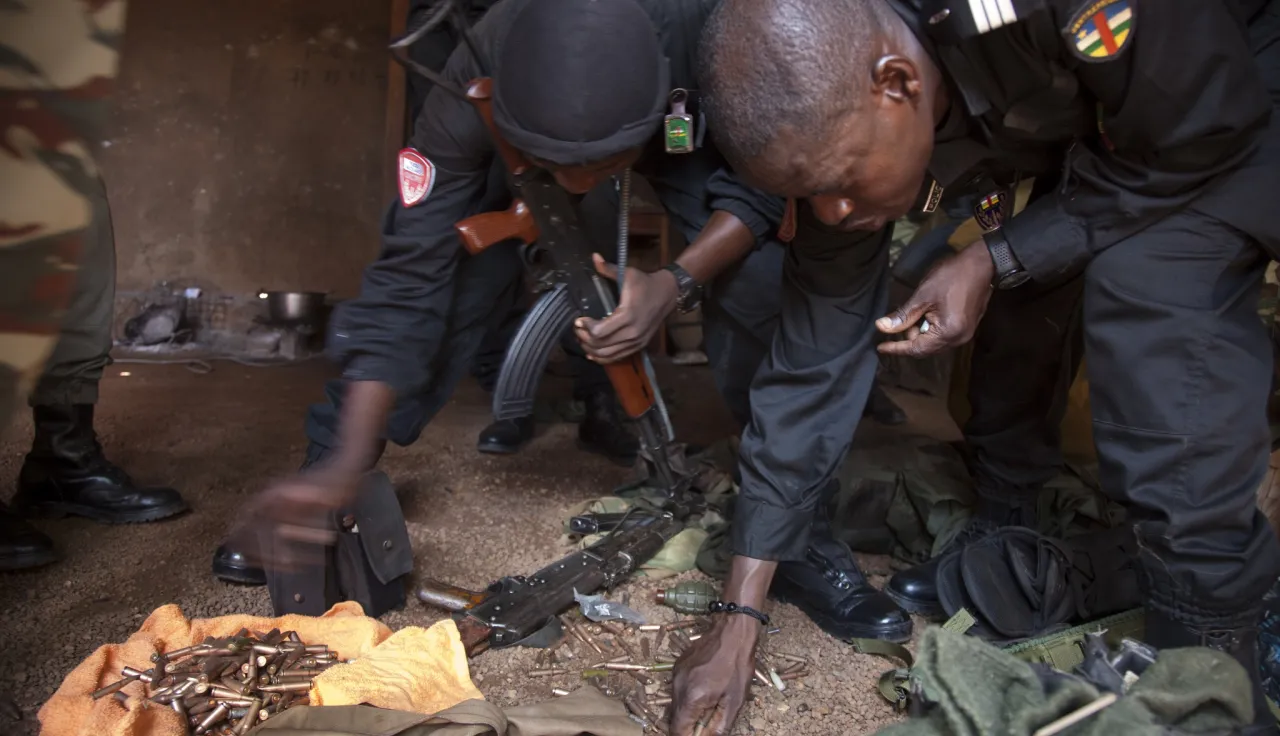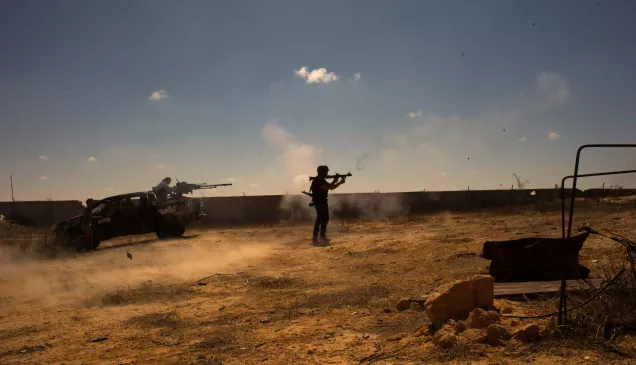As the Arms Trade Treaty turns ten years old, restraints on international arms transfers remain an urgent humanitarian imperative

Sunday, 2 April, marks the tenth anniversary of the adoption of the Arms Trade Treaty (ATT). The treaty seeks to reduce the human suffering caused by insufficient controls over the international trade in conventional weapons, such as assault rifles, bombs, rockets, tanks and fighter jets. It establishes a global norm for responsible transfers of arms.
As the director of law and policy at the ICRC, I am proud of the role played by the ICRC and the wider International Red Cross and Red Crescent Movement in the lead-up to the ATT's adoption. At that time, I had already served for more than a decade as an ICRC delegate and legal adviser in countries affected by war and violence around the world. I know all too well how the widespread availability of arms, especially small arms, leads to tragic consequences for individuals and communities.
A decade later, ICRC delegates still bear daily witness to the immense hardship caused by violence and conflict fuelled by insufficient controls over the trade in weapons and ammunition. Violations of international humanitarian law (IHL) and human rights are facilitated by easy access to arms. And long after wars have ended, high levels of insecurity and armed violence, including sexual violence, persist and hinder post-conflict reconciliation and recovery.
Ten years on, restraints on arms transfers remain an urgent humanitarian imperative.
The ATT represents a significant achievement with clear humanitarian benefits
The ATT holds out the promise of saved lives and livelihoods, unhindered delivery of humanitarian assistance and greater respect for IHL and human rights. The treaty aims to ensure that weapons do not end up in the hands of those who would use them to commit war crimes and other international crimes.
I am pleased that 113 states have joined the ATT over the last decade, most recently Andorra, Gabon and the Philippines. Over 40 per cent of global exports of major conventional arms are subject to the ATT's requirements today, and I am confident that states parties' investment in strengthening their national control systems, international cooperation and assistance, and in advocating for all states to join the treaty will pay off in the coming years.
Unlike the trade in most other goods, arms transfers exact a deadly toll. States parties have committed to carefully considering respect for IHL and human rights law in their transfer decisions, irrespective of whether these are matters of commerce or military assistance. Such decisions must be underpinned by rigorous analysis. And the treaty's requirements applied consistently, objectively and systematically throughout the decision-making process, including at the highest levels of government.
When making decisions about arms transfers, all states must bear in mind their obligation to respect and ensure respect for IHL. They must do everything reasonably within their power to prevent and put an end to violations of IHL committed by parties to an armed conflict. Owing to their ability to provide or withhold the means by which war is fought, states that supply weapons to a party to an armed conflict shoulder particular responsibility to leverage their influence with a view to reducing the human cost of war.
Thoroughly vetting those who receive arms, ensuring they are properly trained, and continuously monitoring how arms are actually used and by whom, are critical tools for effectively assessing and reducing the humanitarian risks.
Importantly, if there is a clear risk that weapons supplied could be used to commit violations of IHL, states must refrain from providing them.
States must put the protection of civilians first
The humanitarian objective of the ATT – reflected in its preamble – is brought to life by the requirement that states parties must put the interests of civilian protection ahead of security or foreign policy, military or economic considerations. Indeed, it is difficult to see how exported weapons could ever contribute to peace and security in cases where there is a clear risk that they could be used to commit or facilitate a serious violation of IHL or international human rights law. The treaty's purposes of reducing human suffering and of contributing to international and regional peace and security are interlinked and mutually reinforcing.
Yet weapons continue to flow to some of the most brutal armed conflicts today, exacting an unacceptable toll on civilians. Increasingly destructive weapons, formerly reserved for use by organized military forces, have become available to a growing range of users, and arms sales are on the rise, driven by commercial incentives and resurgent arms race dynamics.
The ICRC has repeatedly expressed concern over an apparent gap between the commitments assumed by states under the ATT and IHL on the one hand, and arms transfer decisions of too many states in practice on the other. This gap must be closed, lest the hard-won norms enshrined in the ATT become eroded and its effectiveness and credibility be called into question.
If the ATT is to make an actual difference on the ground, where it matters most, states must give greater weight to the humanitarian consequences of arms transfer decisions and more effectively reduce the attendant risks.
Ultimately, the positive impact of the ATT in peoples' lives relies on the application of the treaty in good faith, in accordance with its humanitarian purpose. Together with states and other stakeholders, the ICRC is committed to continue working for the universal adoption of the ATT and its faithful implementation.
Nils Melzer, Director of International Law, Policy and Humanitarian Diplomacy, ICRC

